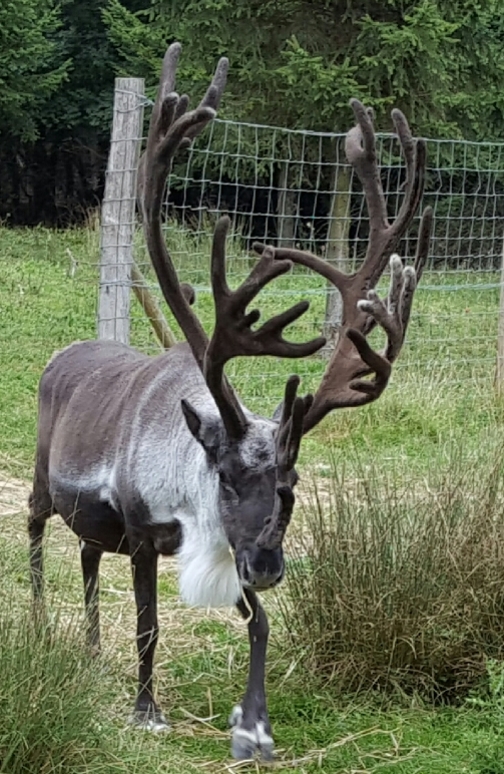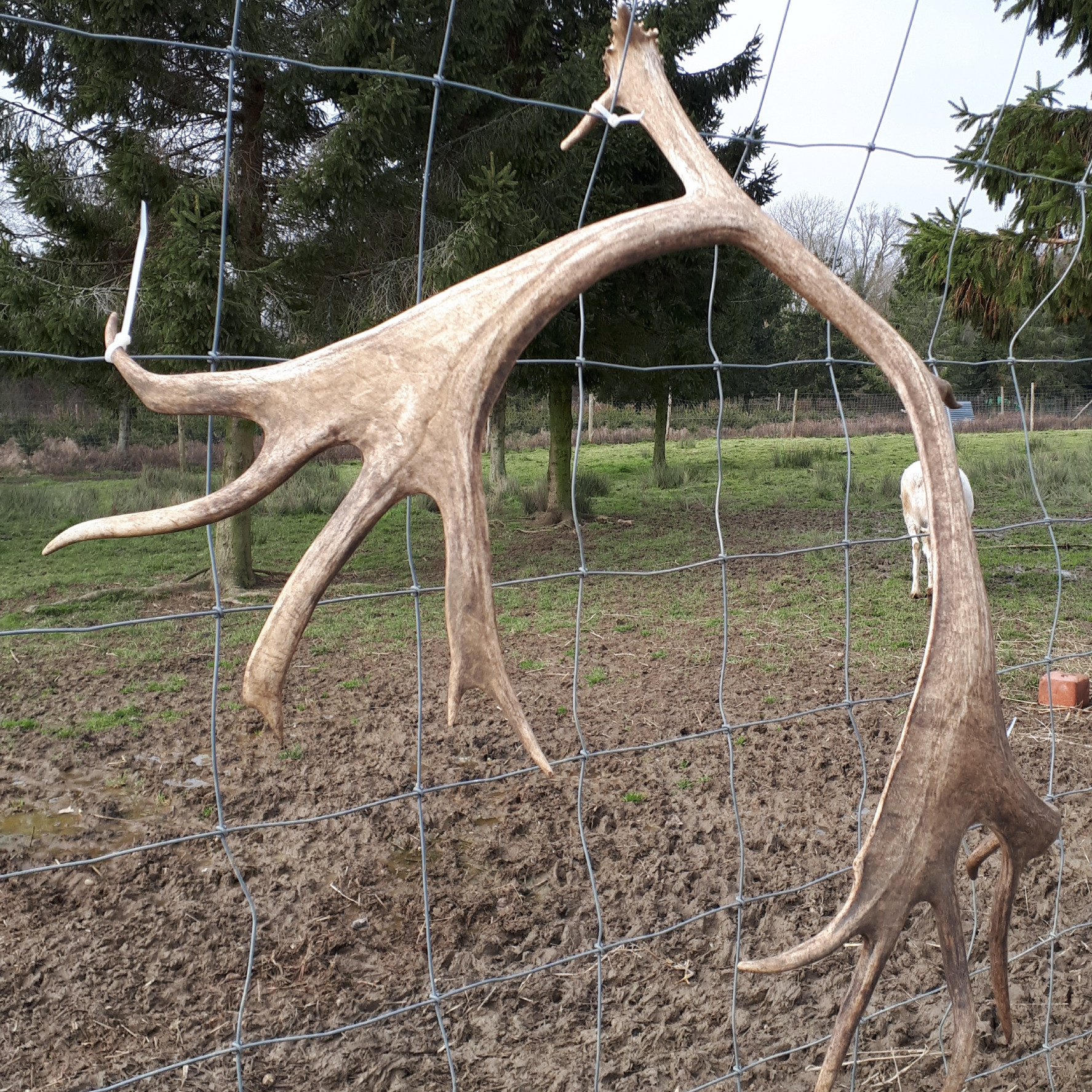February with the reindeer
Posted on 21st February 2018 at 15:33
This month I will give you a little insight into the history and character of NOG, one of our oldest reindeer.
Nog
Nog is our dominant male.
In short he is the boss and strutts about being in charge of all the other reindeer. Reindeer are herd animals and are therefore quite happy to follow Nog around their pen. Most of the time he is pleased to see visitors but he may grunt and nudge the fence to let you know who is in charge!
As one of the oldest reindeer Nog is much loved by everyone.

Nog with his very impressive antlers last year

Nog waiting for his antlers to start growing this month. When they do they will grow about 2cm every day
Antlers
Antlers are like fingerprints, no two are alike.
Reindeer are the only species of deer where both male and female grow antlers. Male antlers are generally the bigger of the two and are shed after the rutting season, which is usually early December. Females hold on to their antlers until after their babies are born May or June.
Male antlers can grow to an impressive 130cm long and weigh up to 15kg. I know many of you have been to the farm and held an antler, they are pretty heavy. Male reindeer use their antlers to protect them from danger and to attract female reindeer. Female reindeer antlers are much smaller and thinner, they use them to clear snow and leaves to find food.
Antlers, when they start to grow, are furry. This is called being 'in velvet' as that is what it looks like. Blood vessels and fur cover the growing antlers and they are very sensitive at this time. Once the velvet had dried up the reindeer use trees and rocks to rub it off, they look very tatty at this time until it all disappears.


Interesting fact
As the male reindeer shed their antlers early December it is thought that Santa's reindeer must be females as they hold on to their antlers over Christmas! What do you think?
Share this post:

